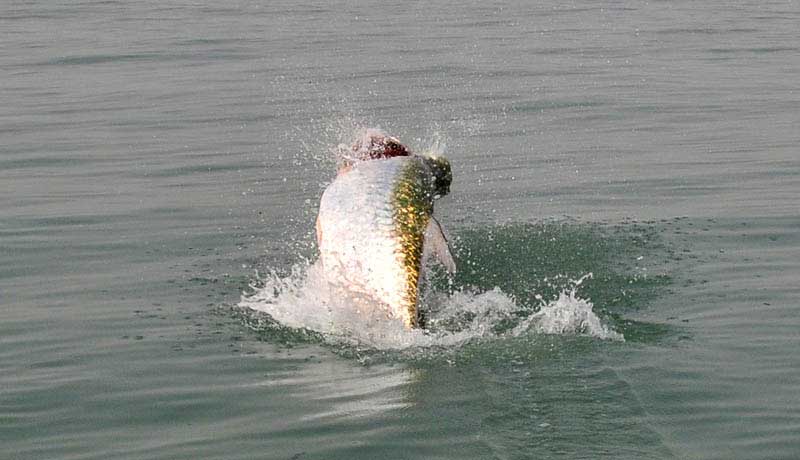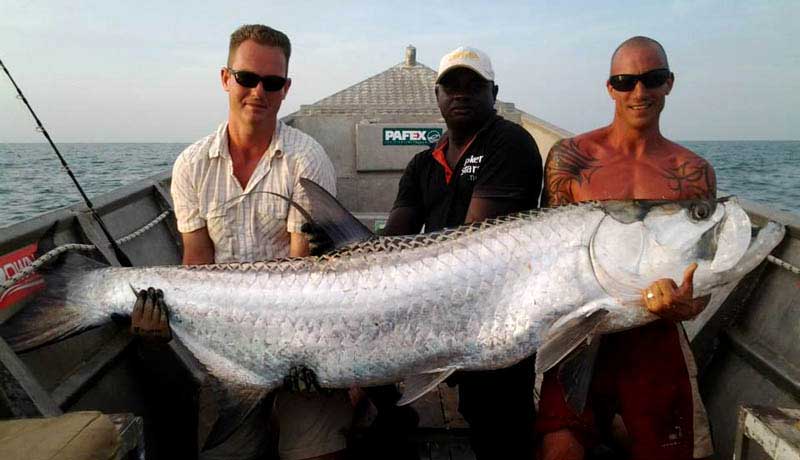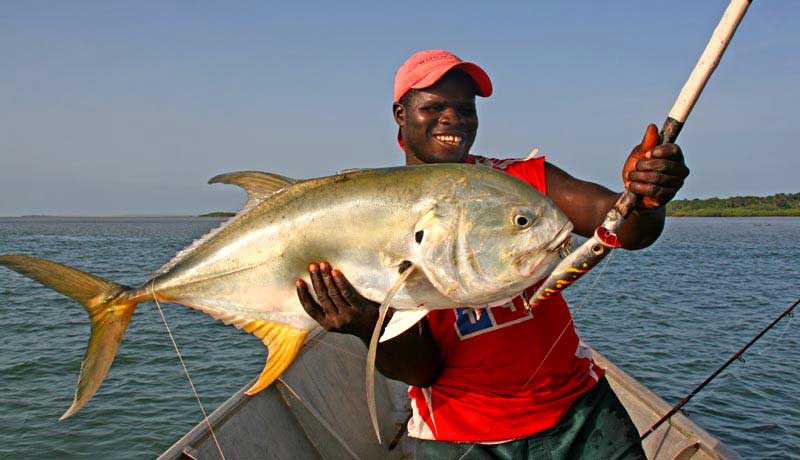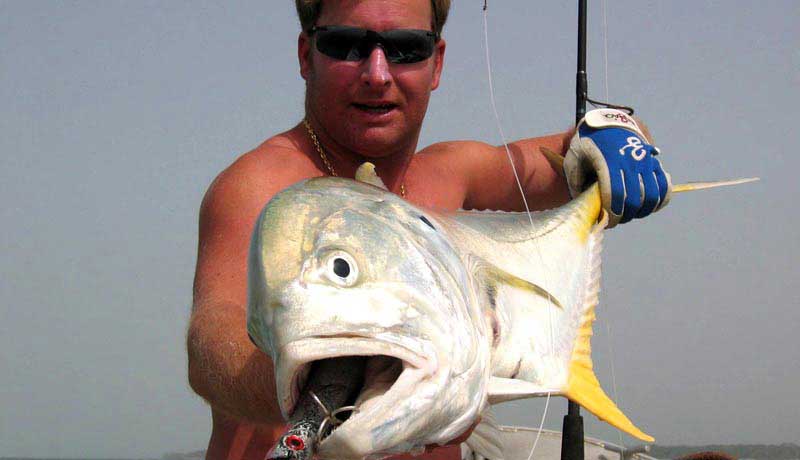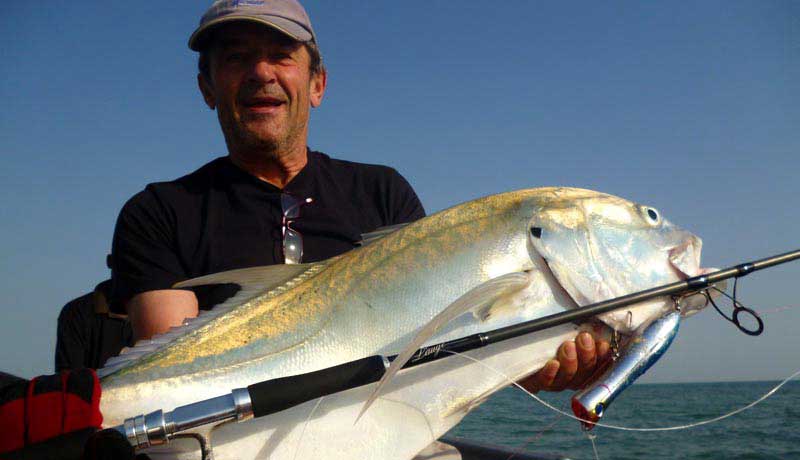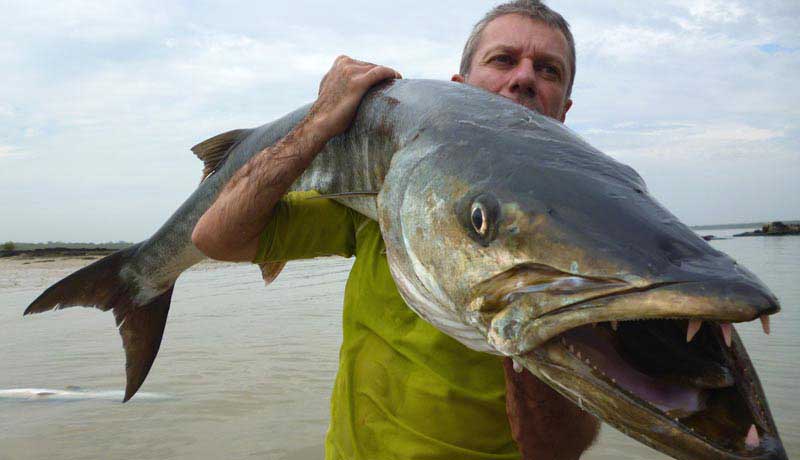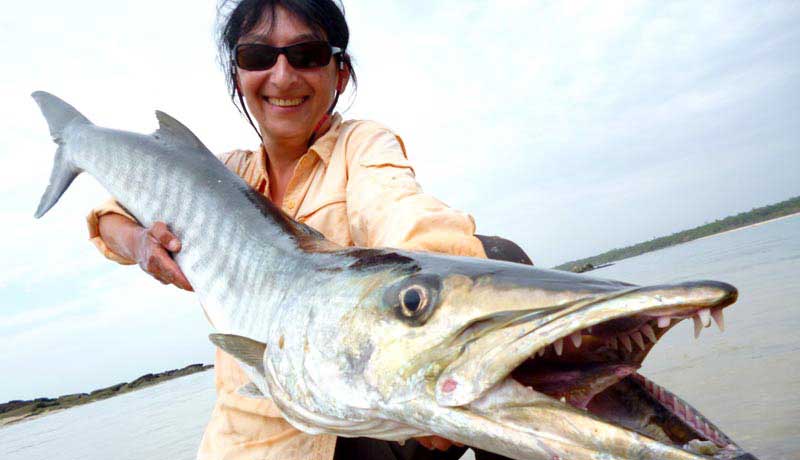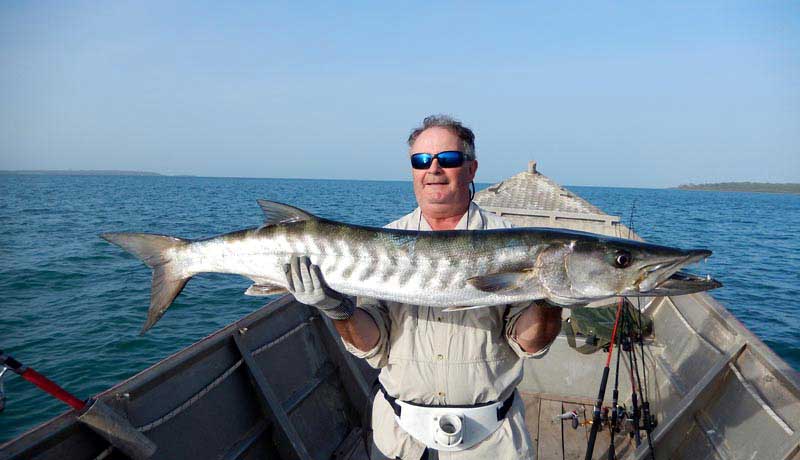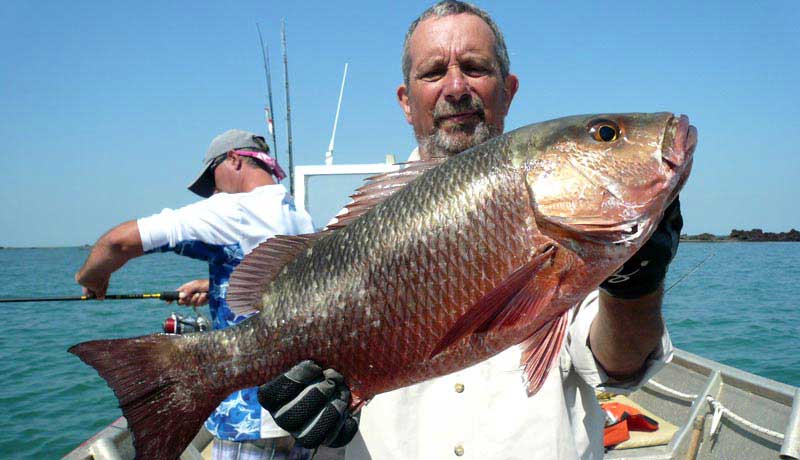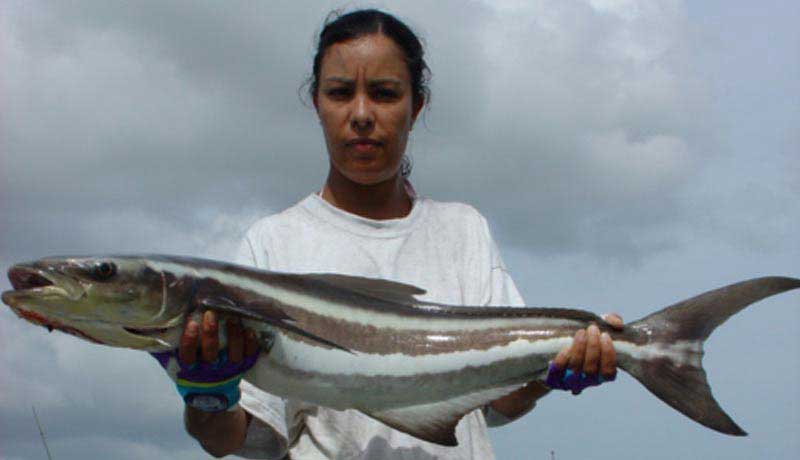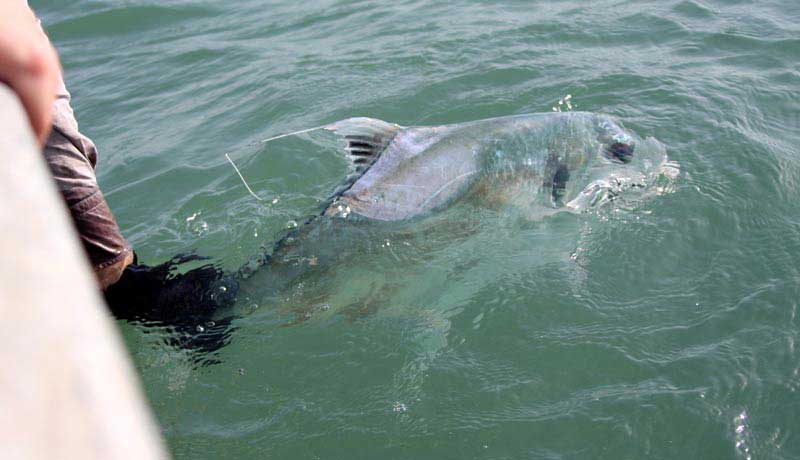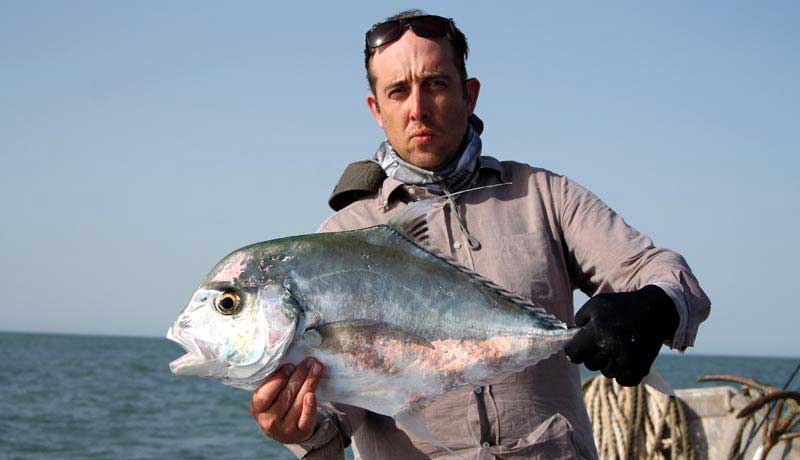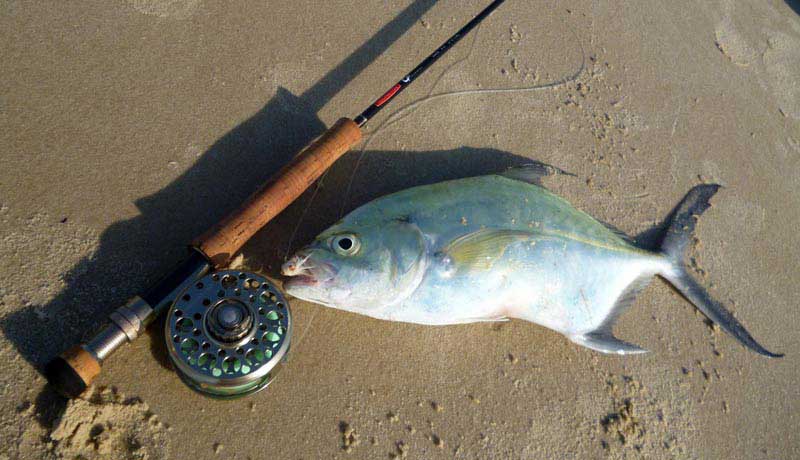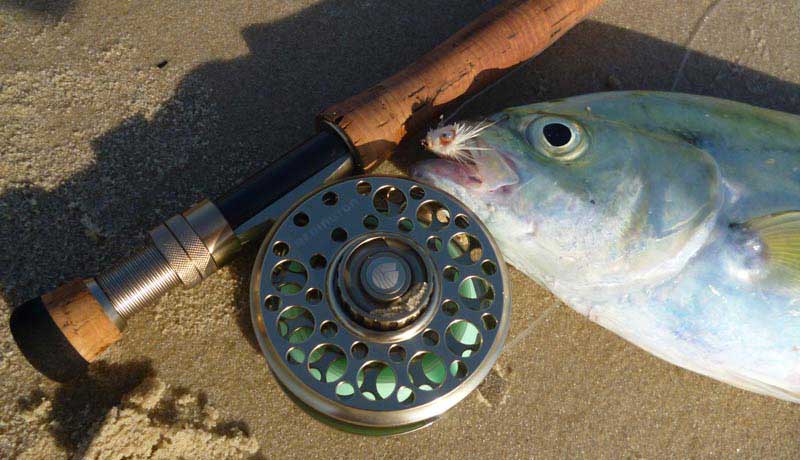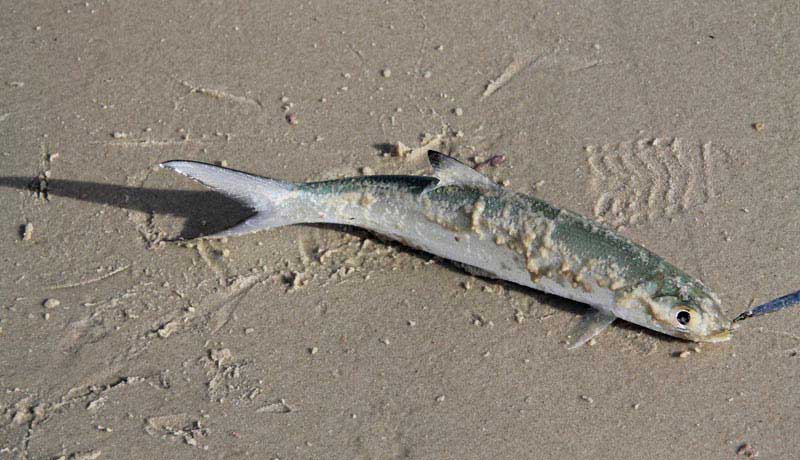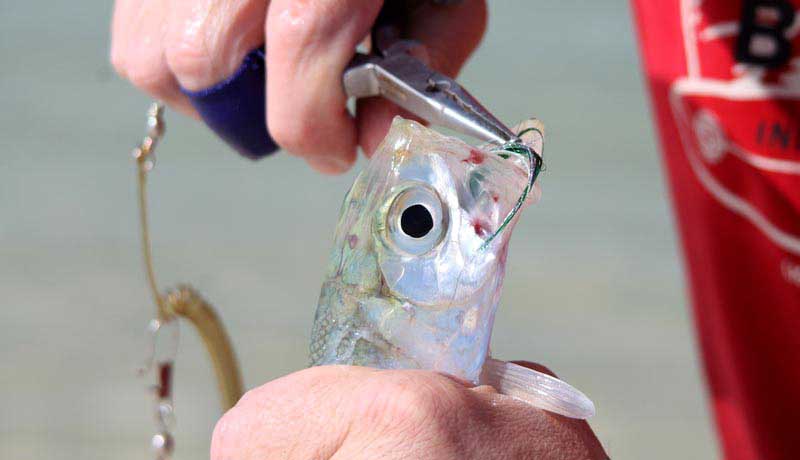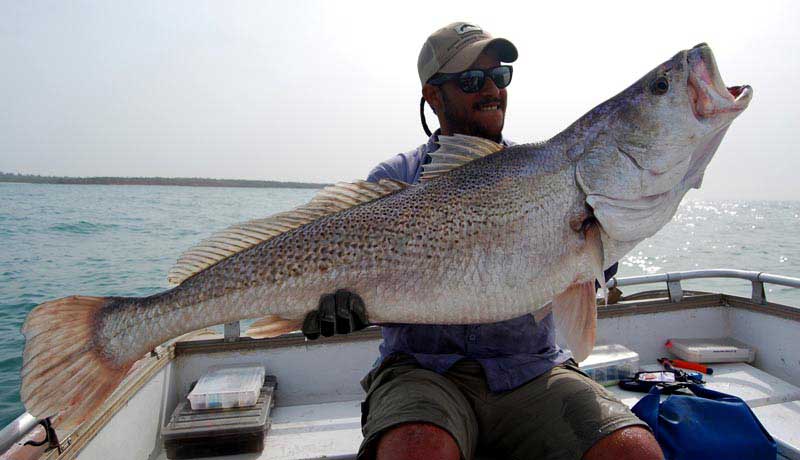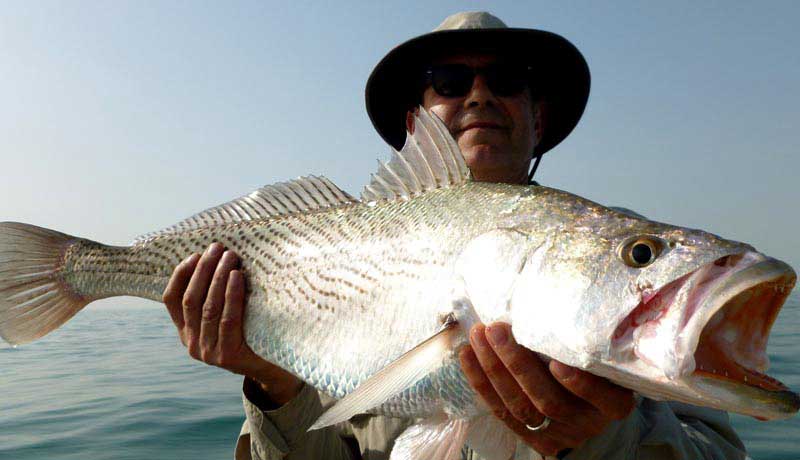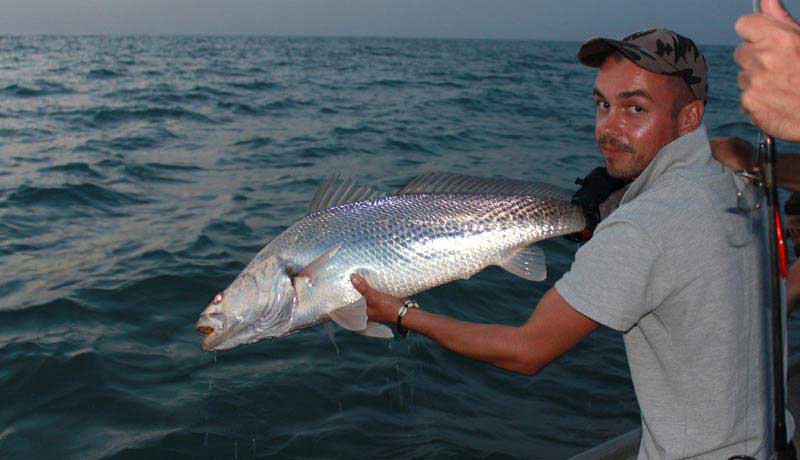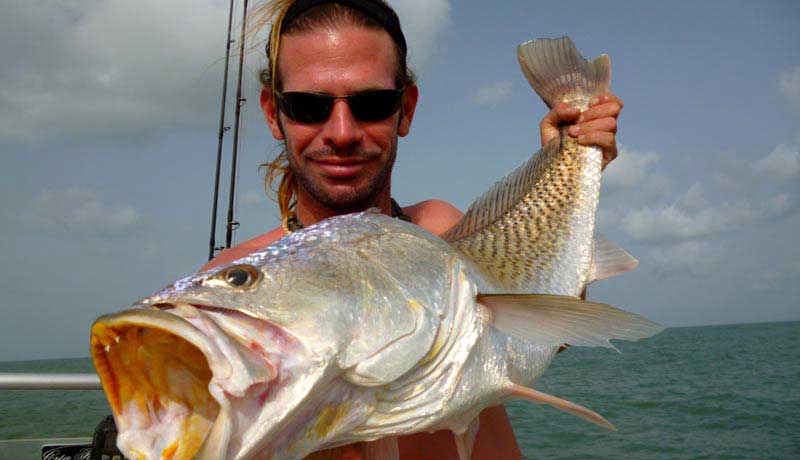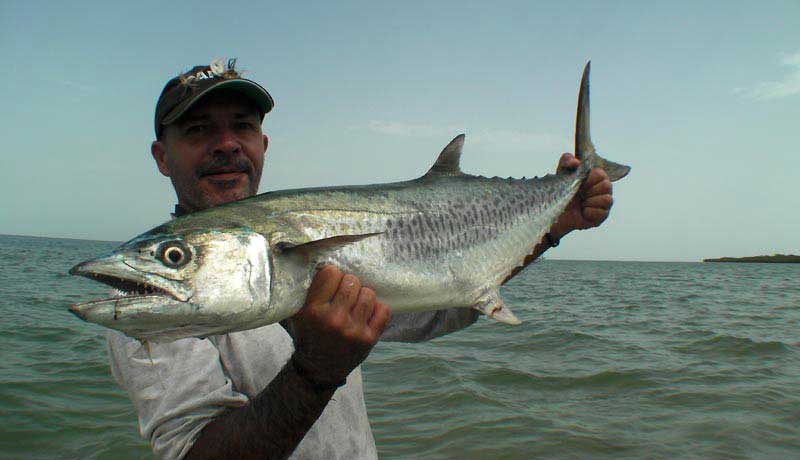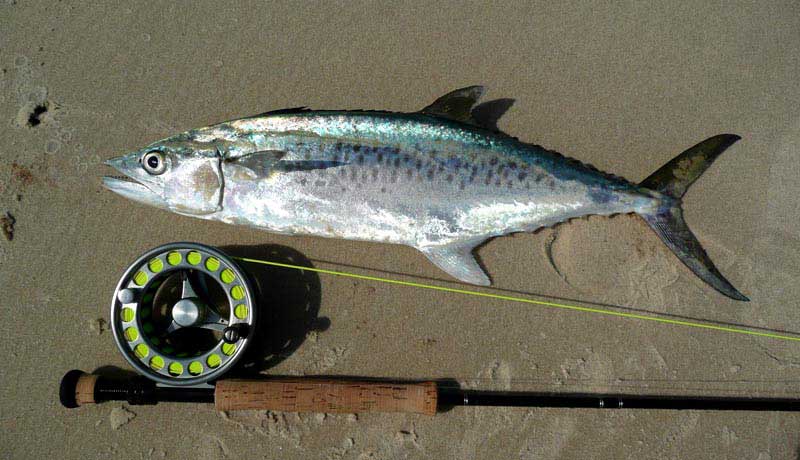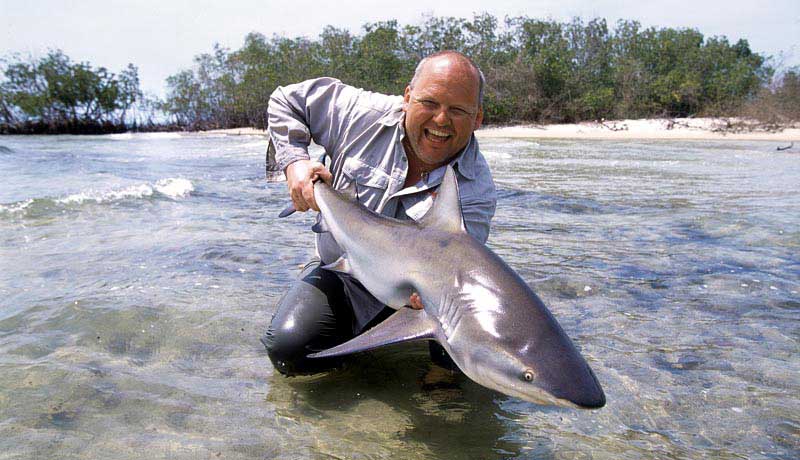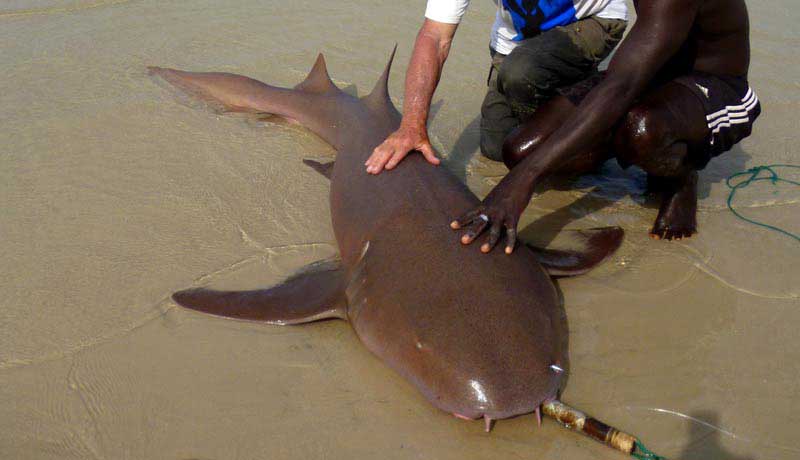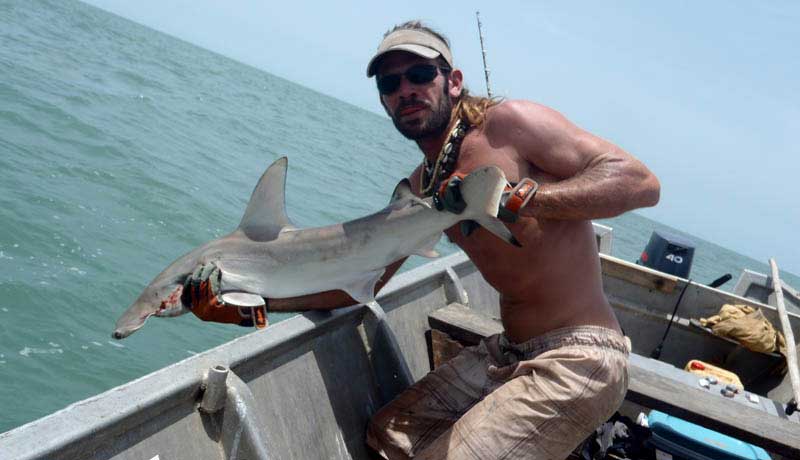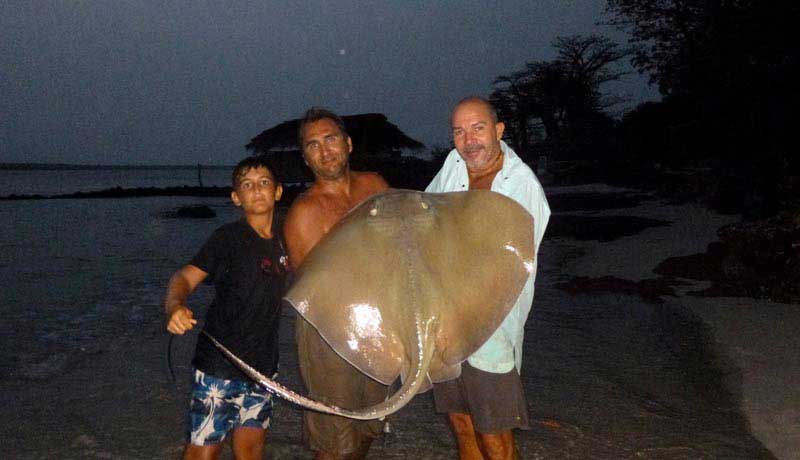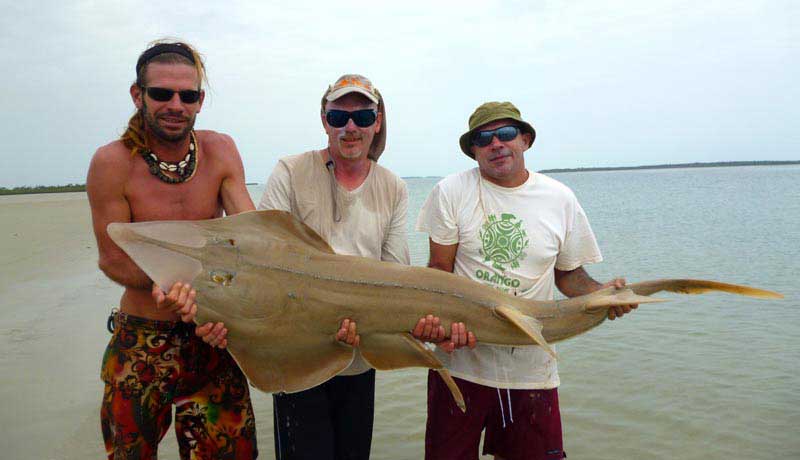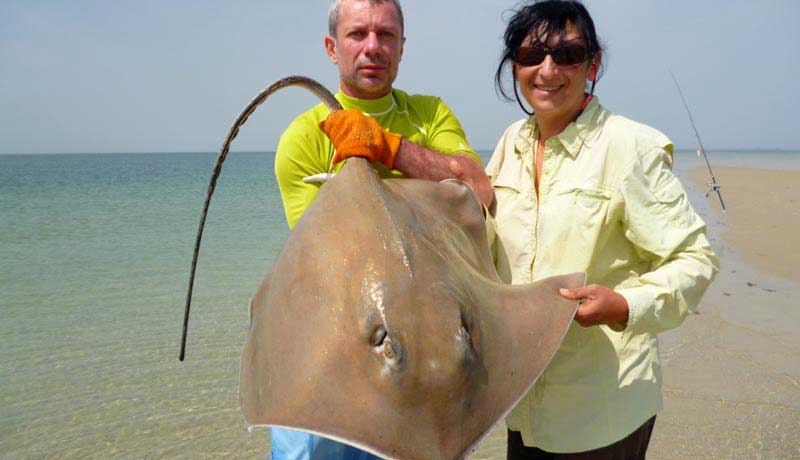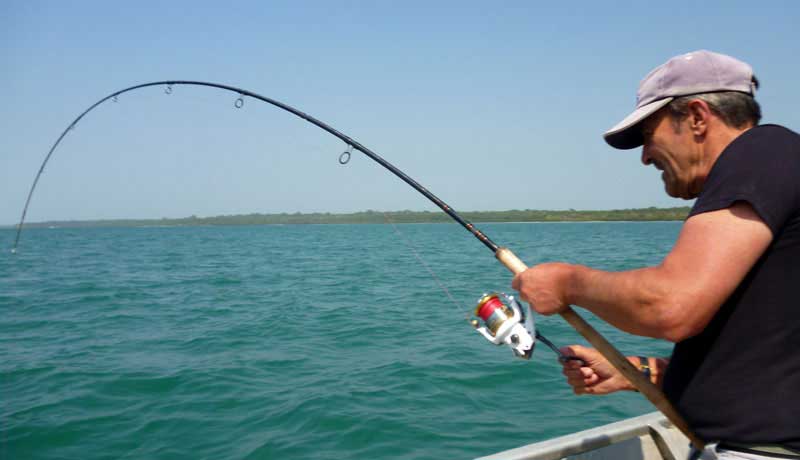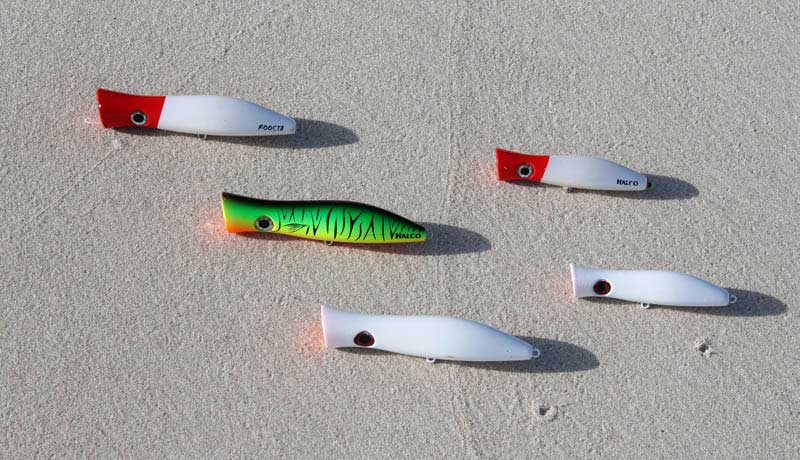Fishes of Bijagos
Fishermen's paradise, the small island of Kere will be the starting point for all your fishing, whatever the technique!
Whether spinning, casting or fly, jigging, surf-casting, handline, trolling, tarpon, you can try everything.
If the sea is a little rough, why not try the fishing feet in the water: fishing on foot is so cool !!!!!
Many other fishes...
With spinning or casting you can catch some hound needlefish sometimes exceeding 2kg with sharp teeth, leerfish that have the bad habit of cutting bottom lines, groupers, skipjacks...
With natural bait or surfcasting you will catch many species such as catfish that have a beautiful defense, bluespotted seabreams, seabreams, groupers and other rock fish...
Heavy or light spinning, surfcasting, jig, fly, troll, natural bait, live fishery, on-foot fishery or in kayak. Details about all efficient techniques for fishing in Guinea-Bissau
To rent on place or to bring with you, all informations about the most adapted equipment for your fishing : reel, rod, lure, accessories, the indispensable.


